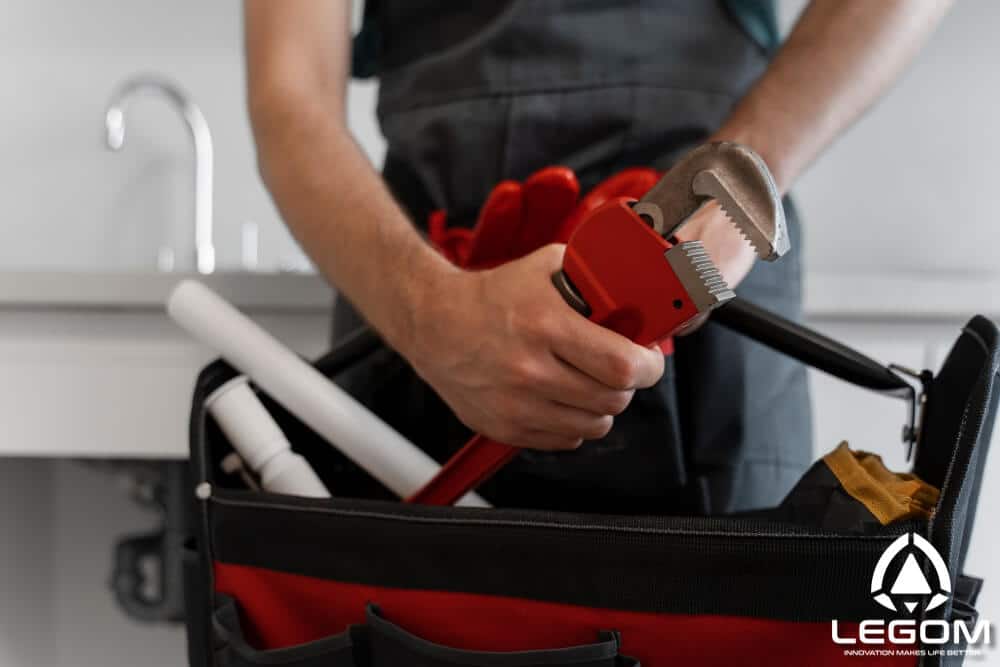
The residential plumbing system is quite complex. A professional plumber can break it down for you when needed. Sometimes, the piping system in a house sustains damage that homeowners cannot handle on their own. When this happens, it’s time to call a professional plumber to fix it. Additionally, it’s a good idea to schedule regular maintenance with a residential plumbing service at least once every six months.
A professional plumber who specializes in residential plumbing differs from a commercial plumber. A residential plumber typically possesses the skills needed to address a variety of issues. They can fix leaking faucets, clear clogged drains, design new piping systems, and add new equipment.
There are two primary types of residential plumbing systems that professional plumbers usually work on. The first involves piping repairs, using various approaches to restore normal water flow. This includes small pressurized pipes that carry water at high speed from equipment.
The second type is the drainage system, which is the endpoint of the household plumbing system, carrying wastewater out of the house. For these drains, plumbers often work with much larger pipes that are not under specific pressure.
The residential plumbing system includes a water supply where a city water valve connects to the meter and main water pipes. Once water reaches the house, it flows through the supply lines to fixtures like showers, sinks, toilets, bathtubs, dishwashers, and other appliances.
Most of the wastewater then flows to the sewer system. The flow in the sewer system is much slower than in the supply system, which is why sewer lines are much larger.
Residential plumbing is usually simpler than commercial plumbing. However, homeowners sometimes add custom features based on the interior and exterior design of their homes.
In contrast, commercial plumbing often includes additional features to accommodate the various tasks it must handle. These can include adding specific features, activating fill valves, recycling wastewater to toilets, reducing pressure for certain systems, and adding chemicals to the water for different purposes.
Types of Residential Plumbing Work
Residential plumbing work usually involves repairing or replacing supply lines, fixtures, and drains. These are the types of jobs professional plumbers commonly perform in homes. The main water line, tank, or well supplies water to various fixtures, and sometimes these supply lines become clogged, or the pipes burst due to various factors.
Plumbers can repair or replace pipes and check valves as needed. The water heater also draws from the main water supply and is a plumbing fixture that receives considerable attention during regular maintenance. The water heater provides hot water for use throughout the house.
Meanwhile, the wastewater from fixtures like sinks and showers must drain out of the house to a septic system for treatment. This septic treatment system can also experience issues, such as blockages or leaks.
Testing Residential Plumbing Components

Sometimes, you may want to check whether your residential plumbing is working correctly before the plumber arrives. Here are a few ways to test the plumbing components in your home:
Water Supply Lines
The pipes that connect your home to the city water supply are usually underground and made of PVC, cast iron, copper, or galvanized steel. To test for leaks, place a bucket under the fixture you suspect is leaking, such as under a sink. You can also install a pressure gauge on the main shutoff valve. If you notice anything unusual, such as a drop in pressure, call a plumber immediately.
Water Heaters and Storage Tanks
The plumbing system that supplies hot water may produce water that is hot enough to burn your skin. Before using the water for washing dishes, bathing, or other household tasks, test the temperature by letting a little water drip onto your elbow, as the skin on your elbow is more sensitive to heat compared to other parts of your body like your fingers. However, for a more accurate and safer method, it’s recommended to use a water thermometer to check the temperature. If the water is too hot or not hot enough despite being set to the correct temperature, you should check the inside of the water heater and storage tanks.
Before planning the installation of residential plumbing, it’s a good idea to ensure that the components you purchase meet safety standards. You can order high-quality products at very affordable prices from Legom. Our products are eco-friendly, durable, and easy to maintain and install. When maintenance is easy, it indicates the quality of the product materials. There’s no need to hesitate in using our top-quality products—many companies and homeowners have already experienced their benefits.
